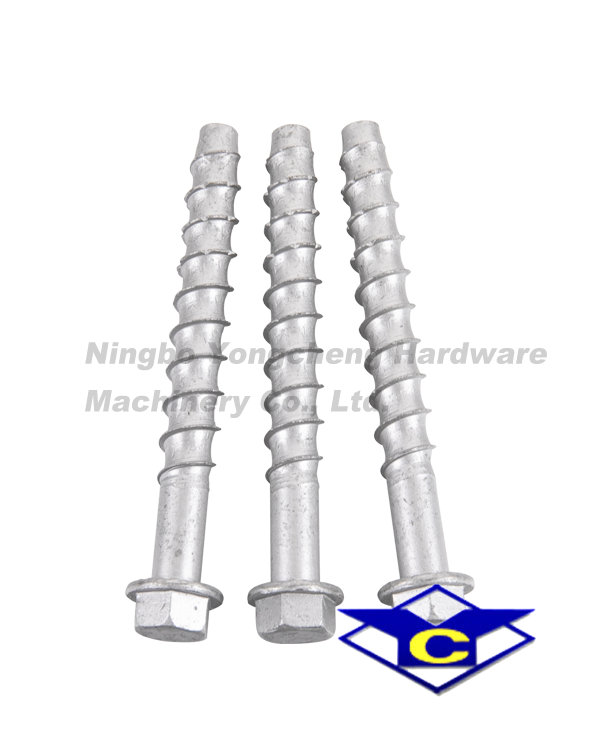

+86-0574-63226508
The stainless steel Heavy-Duty Screw Anchor is a state- […]
The stainless steel Heavy-Duty Screw Anchor is a state-of-the-art solution for concrete and masonry applications. Featuring long-lasting corrosion resistance and fast installation, it's a perfect choice for permanent outdoor applications. screw anchors have a high-tensile steel core for high-impact resistance and can be used in any environment. The newest version is made from stainless steel for corrosion resistance.
Anchors are specifically designed for use in concrete and masonry. The serrated tip cuts the concrete and allows the remaining threads to interlock with the concrete. The anchor's carbon-steel tip is heat-treated, reducing the chances of rust. The corresponding cutting threads are only 1% harder than stainless steel. This design makes the anchor easy to install.
Steel Screw Anchors come in several different sizes. Choose one with the appropriate diameter to match the size of the fixture. The hole should be at least one-half inch larger than the diameter of the steel screw anchor to prevent bottoming out. A 9/16" wrench is needed to turn the nut and install the anchor into the fixture.
Stainless Steel Screw Anchors feature a patented thread design that reduces installation torque. The hex head also provides a positive keyed engagement, which makes it easy to install. Stainless Steel Screw Anchors are available in bright zinc-plated and mechanically galvanized finishes. There are also 316 Stainless Steel Wedge-Bolt Anchors.
Screw Anchors are inserts that hold screws securely into brittle materials. They are also known as wall plugs in the UK. They come in a variety of sizes and types, and can provide effective anchoring solutions for different substrates. Typical self-tap screws have threads made from hardened steel with cutouts.
To install a Steel Screw Anchor, a screwdriver, flathead screwdriver, and a set of drill bits are all necessary tools. Use the appropriate size drill bit. Match the drill bit to the shaft of the anchor to make the proper hole for it. Then, use a hammer to tighten the drywall anchor into place.
